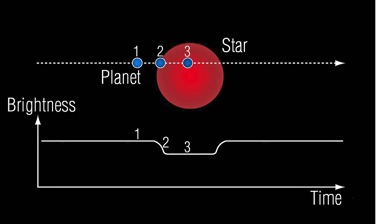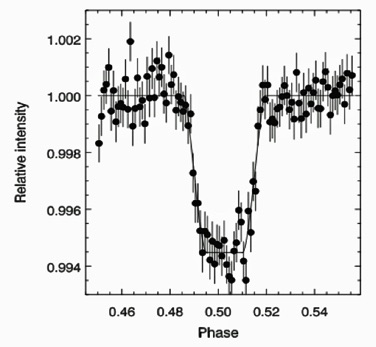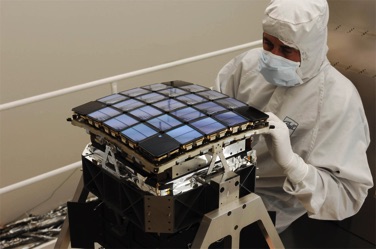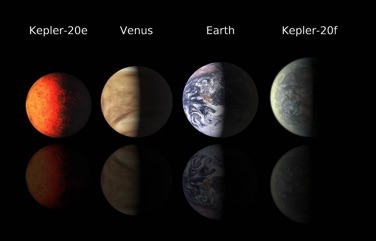The transit photometry method works by examining how the total amount of light emitted by a star varies over time. Examine the configuration of the exoplanet circling star HD 189733 in the main view panel. The alignment of the system is such that the exoplanet will pass directly in front of the line-of-sight between the star and an observer in our solar system. If the exoplanet passes in front of a star, then that star will exhibit a temporary drop in its brightness during the time of the exoplanet’s transit. The star will return to its normal brightness after the exoplanet’s transit of the star has ended. The exoplanet in the main view panel, HD 189733 b, was discovered using the transit photometry method.
The transit photometry method has an advantage over the radial velocity method in that it will work on any exoplanet that affects its parent star’s brightness, not just large exoplanets, as with radial velocity. Its main drawback is that it will only work if the exoplanet’s orbit places it in a direct line-of-sight between the observer and the parent star.
The number of exoplanets discovered by the transit photometry method exploded after the 2009 launch of the Kepler spacecraft. Kepler’s photometer, a device that regularly monitored the brightness of over 145,000 main sequence stars, was responsible for the discovery of over 1,000 certified exoplanets.
An Important Discovery!
On December 20, 2011, NASA announced the discovery of two exoplanets orbiting the star Kepler-20. These exoplanets, named Kepler-20 e and Kepler-20 f, were discovered by the transit photometry method using data from the Kepler spacecraft. The discovery of these two exoplanets was an important milestone in space research. Kepler-20 e and Kepler-20 f were the first Earth-sized exoplanets to be discovered. However, despite their similarity in size to our planet, both exoplanets have short orbital periods (6.1 days and 19.6 days respectively) marking them very hot, inhospitable worlds. (Note: The Kepler-20 solar system actually contains 5 known exoplanets. Click here to see the entire Kepler-20 system.)



